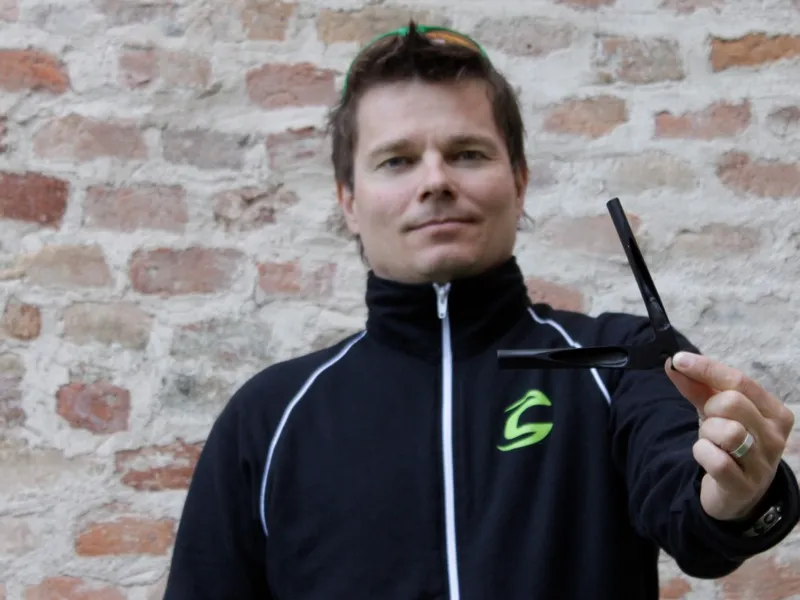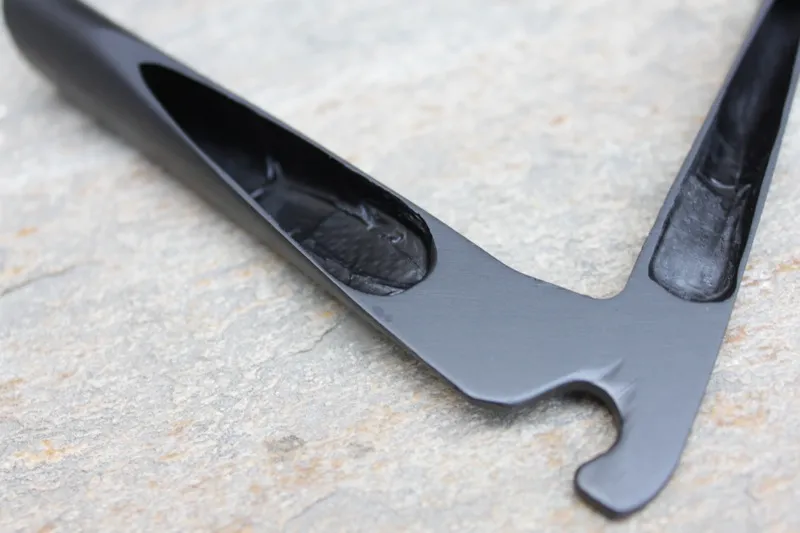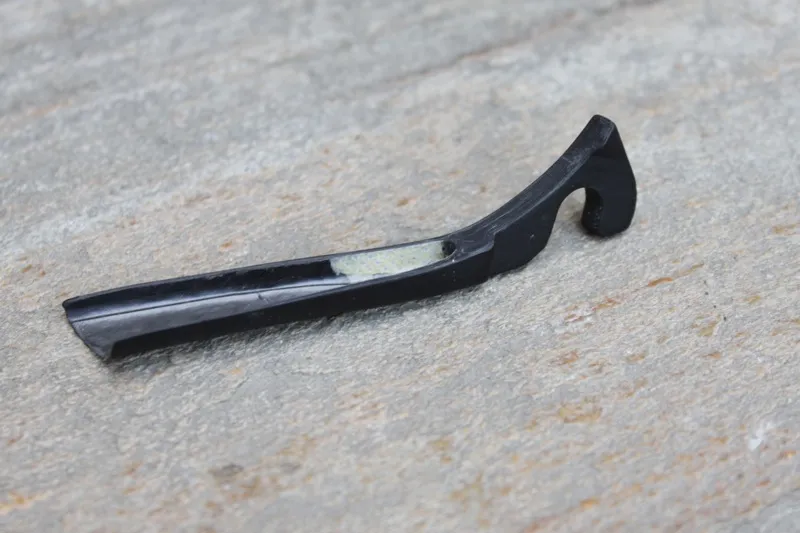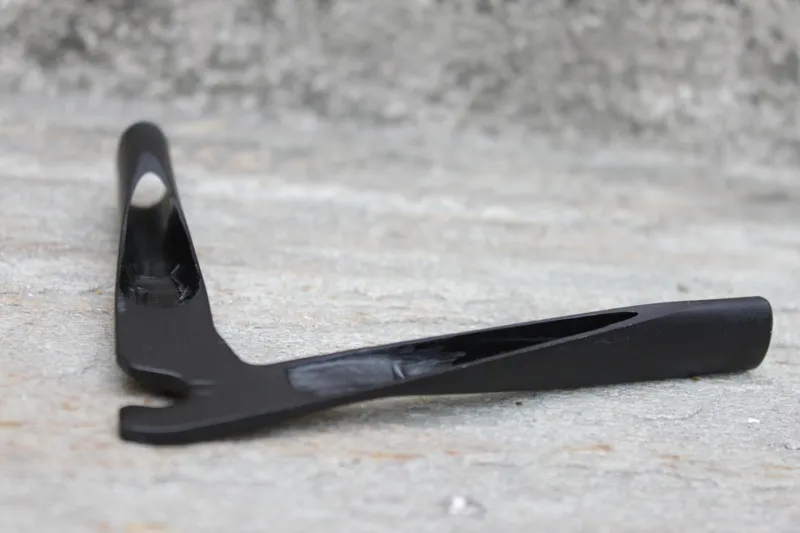Peter Denk has already done a lot with Cannondale, despite being their director of technology for little more than a year. He's applied his considerable engineering savvy to the development of several bikes, but his highest profile projects would have to be the SuperSix Evo road bike and the reborn Jekyll 'over mountain' bike, which was unveiled last year but didn't go on sale until this spring.
The 20-year veteran bicycle designer came to Cannondale after a 12-year tenure with Scott Bicycles as their top engineer and bicycle designer. Prior to that he owned his own company, Hot Chili. “We had a lot of fun with it, but we were stupid enough to spend all of our money on downhill racing; we were always a hair away from bankruptcy,” says Denk.
“We were contacted by Scott and they needed downhill bicycles, so we designed a downhill bike for them to finance our Hot Chili racing. With this, we discovered it was more fun to work for Scott because it was an engineering paradise — 'okay, whatever you want, do it'. We could open tools and molds and forge parts, whatever we thought. I sold Hot Chili and started to work for Scott.”
Denk says Cannondale have always been a dream for him, both as a bike to own and as a company to work for, but it's only now that the timing was right for him to join them. “When I started mountain biking the hottest bike on the planet was from Cannondale,” he says. “I always wanted a Cannondale, but I never had the money.
“I met Scott Montgomery [company founder Joe Montgomery’s son, in 1991 at the Tokyo Bicycle show] and he asked me to work for Cannondale, but I had to finish my studies first. As a German you need your degree. When I switched to Cannondale, for some time Scott Montgomery was at Scott and I was at Cannondale — that was kind of funny!”
BikeRadar sat down with Denk outside of Torino, Italy during Cannondale’s launch of the SuperSix Evo to talk about his new job and the expanding portfolio of Cannondale bikes that he’s already offered his engineering expertise to.
BikeRadar: Peter, what finally brought you to Cannondale?
It was a great opportunity. I’m a big fan of the brand; they're one of the icons of our industry and they wanted me, which is a good thing. They invited me to visit their factory [and that was it.]
Where do your design ideas come from? They seem to be across the board, from road to mountain. Are they simply solutions or tailored to the application?
I’m the biggest critic of my own product, so I’m never 100 percent happy with it; I always think 'this could have been a little bit better'. I like to watch other stuff as well. I look at cars; I look at this [pointing at sculpted outdoor furniture]; I look at trees; I look at how they manufacture bottles; all kinds of stuff.
A lot of the ideas come to me when I ride my bike, so if you want to make sure that I have no ideas, just make me work and not let me be on my bike. It’s really a direct correlation. I love to go [ride] with my friends, but also at least one time a week I go completely by myself because then it’s almost like meditation.
If you’re going out to ride by yourself, how do you choose a bike? What’s your preference: mountain, road?
All bikes. When I ride my mountain bike for some time I say, ‘ahh, I need to ride my road bike’. When I ride my road bike for some time I say, ‘ahh, I need my mountain bike’. Still, I prefer to ride mountain bikes, but I regularly ride my road bike, and I’m not happy without my road bike. After some time, I miss that gliding feel, that sensation of flying, like effortless gliding. What I really love on a road bike is to do a climb that makes you go somewhere, [dig deep] to reach the summit, that’s cool.
What was the single hardest component to design for the SuperSix Evo?
The hardest thing, by far, was to go from the pattern drawing, which is 50-100 pieces, to mass production. It was pretty easy to make 50 good frames, but mass-production was a big headache. And it was a big headache to pass Cannondale testing. We easily passed all the usual industry standards — CEN testing, EFBe, all the standards Scott are using, all the standards Cervélo are using (at least all that I know of) — all that was no problem. There was one single test at Cannondale where the frame developed some tiny paint cracks — structure was okay but the paint had some cracks — and whoa, it was a long time to solve that.
Which test?
It’s a kind of pedaling test with extremely high loads. I think it’s way too much, but anyway, you have to pass it. You can't say, ‘I almost passed Cannondale testing’. [It’s like saying,] I almost passed school; I almost got my driving license.
That makes it that much more of an accomplishment, doesn’t it?
Yeah, but at normal industry standards we were already there, one year ago. It took one year to pass the test.
What's your favorite part of the new bike, design wise?
The dropouts. The dropouts are so cool. The reason why the Evo is so lightweight and so stiff and strong is that I took all of my old frames [that I designed through the years] and the best frames of the competition and I cut them all apart.
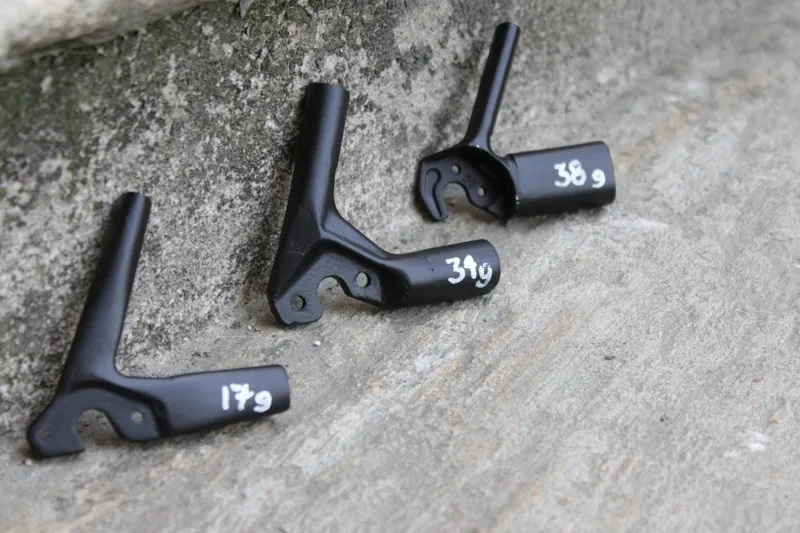
Cannondale's dropout (17g) compared to two of the leading competitors, which are both, at least, twice as heavy
In Bedford, [at Cannondale] they test all of the competition's frames so they have a big pile of high-end broken frames. So I cut all of them apart into little pieces and put them all on scales. Then I found the frame with the lightest head tube area, the lightest down tube… and I analyzed everything and I thought, 'why is it lighter?' Is it good that it’s lighter, or is it maybe bad that it’s lighter because of flex or whatever?
I ended up with these cut off dropouts. I was weighing all of these big parts which weighed almost nothing, and had that small piece in my hand which was so heavy. I thought, 'I’m looking for 1g; this part is so heavy, maybe you can take it out of here?’.
Then you think about manufacturing processes, because when I design a bike I always design a manufacturing process for it. I’m very familiar with manufacturing; the reason why is because I really love to go in the factory and do it by myself.
Some engineers are very high precision but they don’t go to the factory, because they don’t like dirty hands or they don’t like to use a file. I really like to. I go to the factory and I take a scissor and I have a table with big sheets of carbon fiber and I cut it out by myself with the scissors. With a wooden mandrel I shape the tubes… the first prototype frames are always built by myself.
What’s been your favorite project with Cannondale so far? You’ve worked on five bikes, but really four high profile ones: Flash, Jekyll, SuperX, and now Evo, with CAAD10 being the fifth.
Actually, Flash, Jekyll, Super Scalpel, CAAD10 and Super X [before Evo]. Super Scalpel I did with Curtis Detwiler, an engineer in Bedford; he’s a super guy. It depends, what's a favorite project?
Well, it depends on you; what did you have the most fun developing or what project were you most pleased with at the end?
Jekyll, because with the Jekyll bike I had the theory of ‘center stiffness’, which is like: all full-suspension bikes are stiff once they're leaned over and compressed in one direction, but in the middle, from left to right, they're kind of loose. You don’t feel that, because it isn’t really play, but it’s that they are less stiff in the middle. That’s why I call it center stiffness. With the Jekyll, I increased that a lot. It was an experiment and I was very pleased that it worked out; that I could really feel a difference. I like the design, I like the geometry — from all the bikes I’ve ever made, I probably like it the most.
The Evo was more of an engineering challenge to me. With my experience from the Flash, I knew what to expect, so it wasn’t a big surprise. I hoped for this, but I also kind of expected it. From the engineering perspective, it was a big challenge. It was more difficult than the Jekyll.

